




| Migrant Hawker (Aeshna mixta (Latreille, 1805)) |





|
|
Scientific name: Aeshna mixta (Latreille, 1805) Common name: Migrant Hawker French name: Aeschne mixte Order: Odonata Suborder: Anisoptera Family: Aeshnidae Wingspan: Body size : 56 to 64 mm; Wingspan : 85 mm. Biotope: Still or slow running water, rich in emergent vegetation and bordered by reed beds. You can also observe the Migrant Hawker far from water points. Geographic area: Europe north to the Baltic Sea, North Africa, Asia Minor and Asia east to Japan. Populations are more important in the Mediterranean part of its range than in the northern part. There are migrations northwards. Flight time: May to December in the south with a peak in August-September. |
You can identify this small size Hawker with the two broad yellow oblique bands clearly visible on a brown ground colour on the sides of the thorax. There is yellow T-shaped mark on the upper side of the first segments of the abdomen. The frontal suture crossing the face is not marked with black. It is just slightly darkened. The antehumeral stripes are very reduced. Males' abdomens are dark brown with blue marks. Females' abdomens have blue or green marks. Here is some information to tell the Migrant Hawker apart from other blue Hawkers showing broad yellow oblique bands on the lateral sides of the thorax. The Common Hawker (Aeshna juncea) is a larger size. It shows yellow costal veins. Males have much longer yellow antehumeral stripes than the small reduced spots found on Migrant Hawkers. The Azure Hawker (Aeshna caerulea), a more mountainous and northern species, has thin and sinuous yellow lateral stripes on thorax. They are broader and straighter on the Migrant Hawker species. There are also some other larger size northern species, the Bog Hawker(Aeshna subarctica), the Baltic Hawker (Aeshna serrata) and the Siberian Hawker (Aeshna crenata) which are often darker et whose males bear long antehumeral stripes. |
| [To know more about the Migrant Hawker ] [Next picture] [Top] |
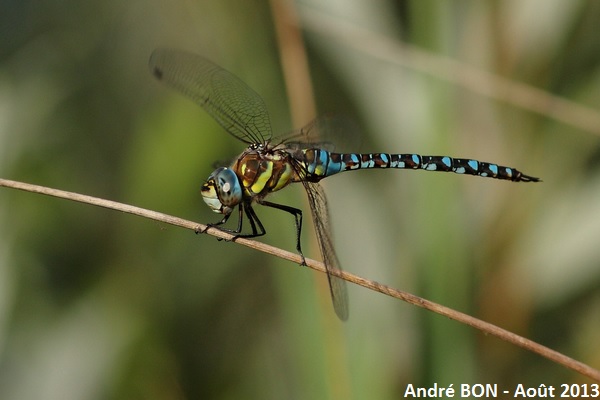
|
The frontal suture is weakly marked. The antehumeral stripes are reduced to small spots. I think that this one is a Migrant Hawker. |
| [To know more about the Migrant Hawker ] [Next picture] [Previous picture] [Top] |
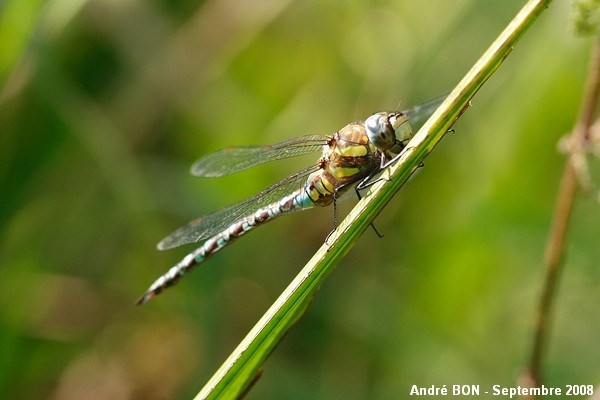
|
I have observed many Hawkers in flight around the ponds, but, unfortunately, no one of them has landed so that I can shoot a picture. And one day, I don't know why, several Migrant Hawkers were used to regularly coming back and landing at the same place on the rushes of the pond's bank. It was time to go when I noticed them. I have spent a few minutes to shoot pictures. I could have done better if I had more time. |
| [To know more about the Migrant Hawker ] [Next picture] [Previous picture] [Top] |
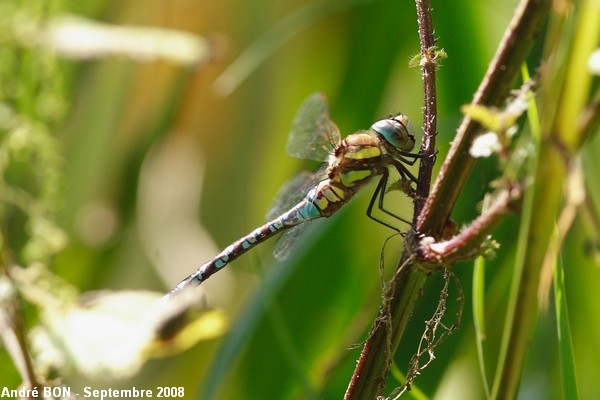
|
It is sometimes difficult to find a good angle of view when the vegetation is very dense. |
| [To know more about the Migrant Hawker ] [Next picture] [Previous picture] [Top] |
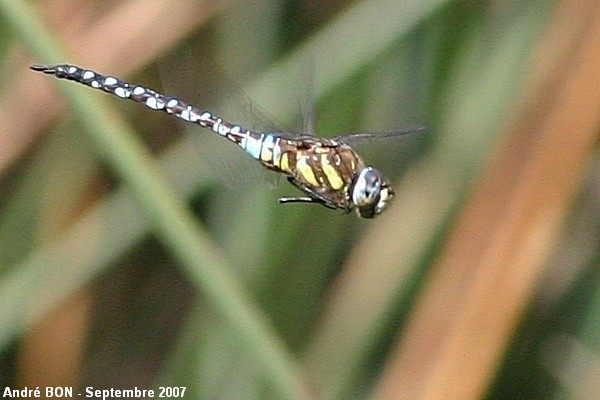
|
I have based the identification of this Hawker on the two yellow bands on the side of the thorax. It was performing stationary flights not far from me. So I have tried to take pictures of a dragonfly in flight. This is the best picture, I still need to make progress! |
| [To know more about the Migrant Hawker ] [Previous picture] [Top] |
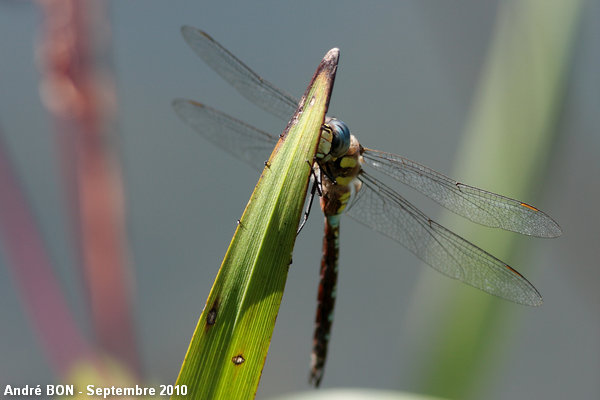
|
Two years later, almost at the same date in the year, I have found again Migrant Hawkers exactly at the same place. |